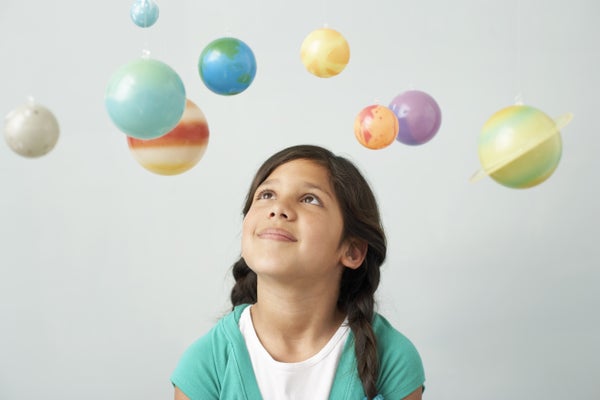This article was published in Scientific American’s former blog network and reflects the views of the author, not necessarily those of Scientific American
The U.S. is the world leader in science and technology. Yet there are signs that our reign will be short lived. International comparisons of science achievement find that U.S. students lag behind their counterparts from other countries, including China and Russia. Substantial science achievement gaps also exist within the U.S., dividing students in terms of race, ethnicity and socioeconomic status. The result is a shameful amount of wasted potential. We must do a better job of preparing all U.S. students to excel in science.
Fortunately, we have a clearer picture of why some children struggle with science at school. A large-scale longitudinal study found that children who entered school with low levels of science knowledge were the ones most likely to end up on the wrong side of the achievement gap. So it's not that low-achieving students lack intelligence, or that their parents, teachers and schools are holding them back—it's what they don't know about science that hurts them.
These initial gaps tend to widen over the years, a kind of "Matthew effect" in which better-prepared students learn more and poorly-prepared students learn less. The data suggest that improvements to early science education, especially methods aimed at lower-knowledge children, will have the biggest payoff for student achievement.
On supporting science journalism
If you're enjoying this article, consider supporting our award-winning journalism by subscribing. By purchasing a subscription you are helping to ensure the future of impactful stories about the discoveries and ideas shaping our world today.
In research published in 2019 in the journal Psychological Science, my colleague Florencia Anggoro and I tested a new method of teaching science to young students—one aimed at clarifying scientific ideas for children who may have little background knowledge. In this project, we focused on teaching the day/night cycle, a fundamental topic that U.S. students are expected to understand between third and fifth grade, but that most cannot explain even by seventh and eighth. The day/night cycle arises from Earth's axial rotation, which affects whether and when a location on Earth's surface is exposed to sunlight over the course of a day. Children have a hard time making the connection between what they observe in the sky—events like sunrise and sunset—and the invisible motion of our planet.
Our method emphasized the relevant connections by showing students the same events from both an Earth-based perspective (a view of the sky) and a space-based perspective (zooming out to see planet Earth and the sun). These perspectives were presented in a split-screen video display, enabling the student to see how the sun's location in the sky relates to Earth's position in space over the course of a day. A trained researcher pointed back and forth between the synced-up videos and explained the connections, for example: "We start to see the sun in the sky—sunrise—when our location on Earth begins to face the sun." We called these coordinated supports relational scaffolding.
Our first experiment involved 108 3rd grade public school students, some of whom were randomly assigned to receive relational scaffolding during a series of one-on-one lessons about the day/night cycle. The lessons covered key events—sunrise, midday, sunset and midnight—and involved demonstrations with a model solar system. We administered a comprehensive knowledge assessment immediately before and after the lessons, and also several weeks later.
Relational scaffolding had a clear impact. Students who received the scaffolding learned considerably more than those who got the same lessons without it. In fact, students in the relational scaffolding condition more than doubled their knowledge, and retained most of what they had learned when tested weeks later.
We conducted a second experiment with a new sample of 99 3rd graders to better understand why relational scaffolding worked. In this study we showed students the same Earth- and space-based videos as before, but some students saw them one at a time, without explicit comparison, whereas others saw them together, as in the original relational scaffolding condition.
This difference proved consequential, especially for students who had little initial knowledge. When the videos were shown together, lower-knowledge students achieved the same level of understanding as their higher-knowledge peers, despite the initial gap between them. When the videos were shown separately, however, the gap between lower- and higher-knowledge students remained.
Together, these findings show that children's science understanding is enhanced when their observations of the world are explicitly connected to the invisible events that explain what they see. Making these connections is especially beneficial for less-knowledgeable students, giving them a conceptual foothold that can make up for their initial disadvantage.
We envision—and aim to test—many other applications to science teaching, with the ultimate goal of helping the many children who struggle with science in school. Science achievement gaps are not inevitable. Giving all children the support to excel in science is not only the right thing to do, it could ensure that the U.S. remains at the forefront of science and technology far into the future.
The research described here was funded by the Institute of Education Sciences (IES). The opinions expressed are those of the author and do not represent views of the Institute or the U.S. Department of Education.
